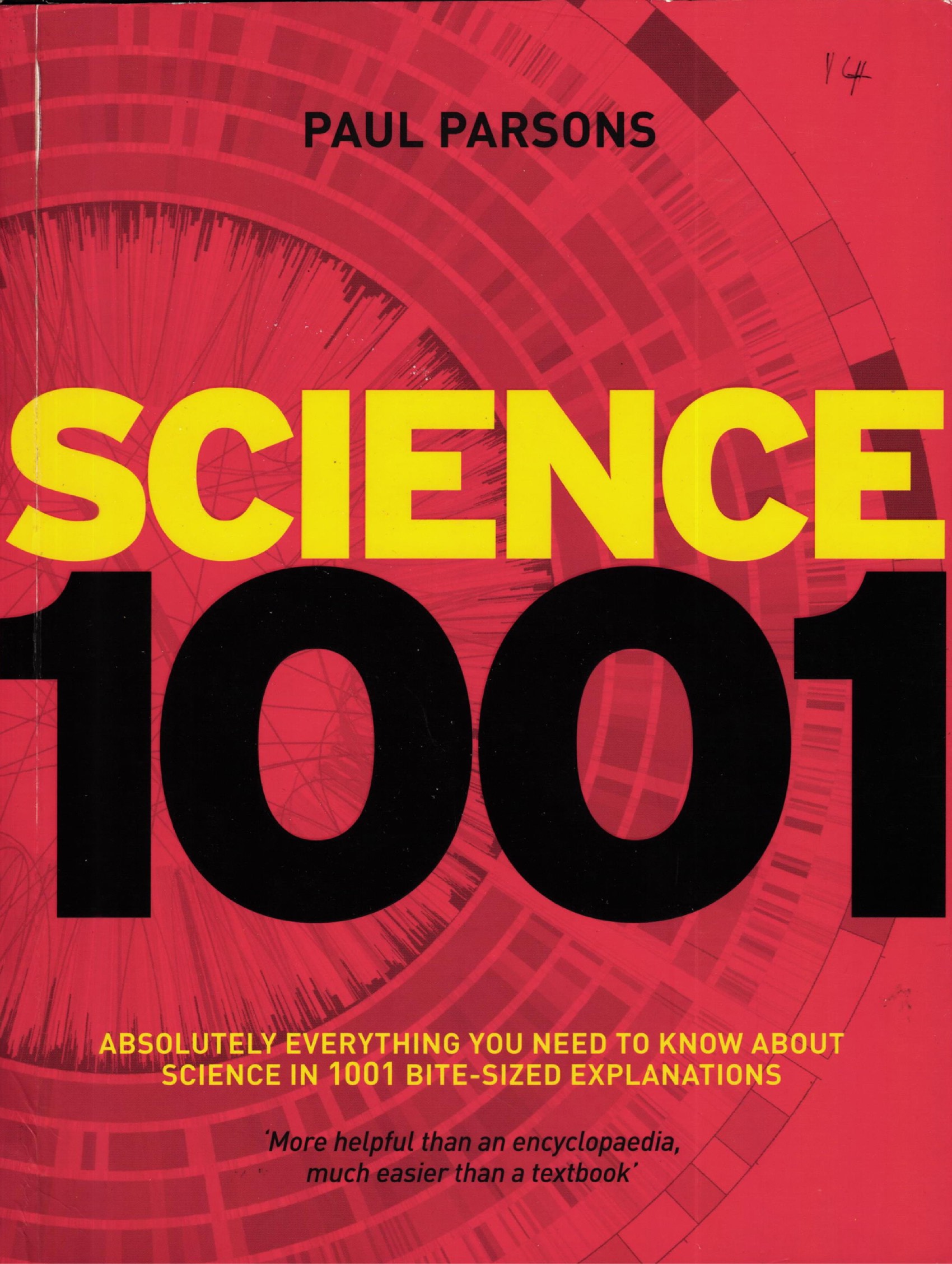SCIENCE 1001
Summary of Science 1001 by Paul Parsons
Science 1001 by Paul Parsons is a comprehensive and accessible guide that breaks down key scientific concepts into 1001 bite-sized explanations. The book spans multiple disciplines, from physics and chemistry to biology, astronomy, and social sciences, making it a valuable resource for anyone interested in understanding the fundamental principles of science.
Key Themes and Structure:
1. Introduction to Science
• Science is the process of answering fundamental questions about the universe.
• Key milestones include discoveries about the Big Bang, DNA, evolution, and computing advancements.
• The book is structured into ten major sections, covering different scientific fields in an easy-to-read format.
2. Physics
• Covers mechanics, heat, matter, fluids, waves, electricity, magnetism, relativity, quantum theory, and particle physics.
• Newton’s Laws, Einstein’s relativity, and quantum mechanics are explained.
• Introduces key principles such as energy conservation, thermodynamics, and electromagnetism.
3. Chemistry
• Explains the structure of atoms, molecules, and chemical reactions.
• Discusses key topics like chemical synthesis, physical chemistry, and materials science.
• Covers fundamental concepts such as the Periodic Table, bonding, and reactions.
4. Earth Sciences
• Examines geology, meteorology, climatology, and natural disasters.
• Covers Earth’s structure, plate tectonics, and the impact of climate change.
• Discusses major geological events and the formation of Earth’s landscapes.
5. Space and Cosmology
• Explores astronomy, the solar system, galaxies, black holes, and space travel.
• Covers the Big Bang theory, the expansion of the universe, and the search for extraterrestrial life.
• Discusses how scientists study celestial objects and cosmic phenomena.
6. Biology
• Examines biochemistry, genetics, microbiology, cell biology, zoology, and evolution.
• Explains how DNA, RNA, and natural selection drive life processes.
• Covers human anatomy, the brain, and the principles of medical science.
7. Medicine and Health
• Covers the human body, diseases, pathology, medical procedures, and genetics.
• Explains the role of modern medicine, surgery, and medical imaging.
• Discusses genetic engineering and advances in biotechnology.
8. Applied Science and Technology
• Covers engineering, material science, forensic science, archaeology, and military technology.
• Explores energy generation, space technology, and genetic modification.
• Examines AI, computing, and scientific advancements in modern technology.
9. Social Science
• Discusses psychology, brain function, consciousness, economics, and politics.
• Examines the impact of social trends, artificial intelligence, and online technology.
• Covers how human behavior and cognitive sciences shape societies.
10. The Future of Science
• Predicts developments in physics, chemistry, biology, space exploration, and medicine.
• Discusses how AI, quantum computing, and genetic engineering will shape the future.
• Covers potential scientific breakthroughs and ethical considerations.
Conclusion
Science 1001 serves as an encyclopedic guide to scientific knowledge, presenting complex concepts in a clear and engaging manner. It is ideal for both beginners and enthusiasts who want a broad yet concise understanding of key scientific principles across multiple disciplines.
